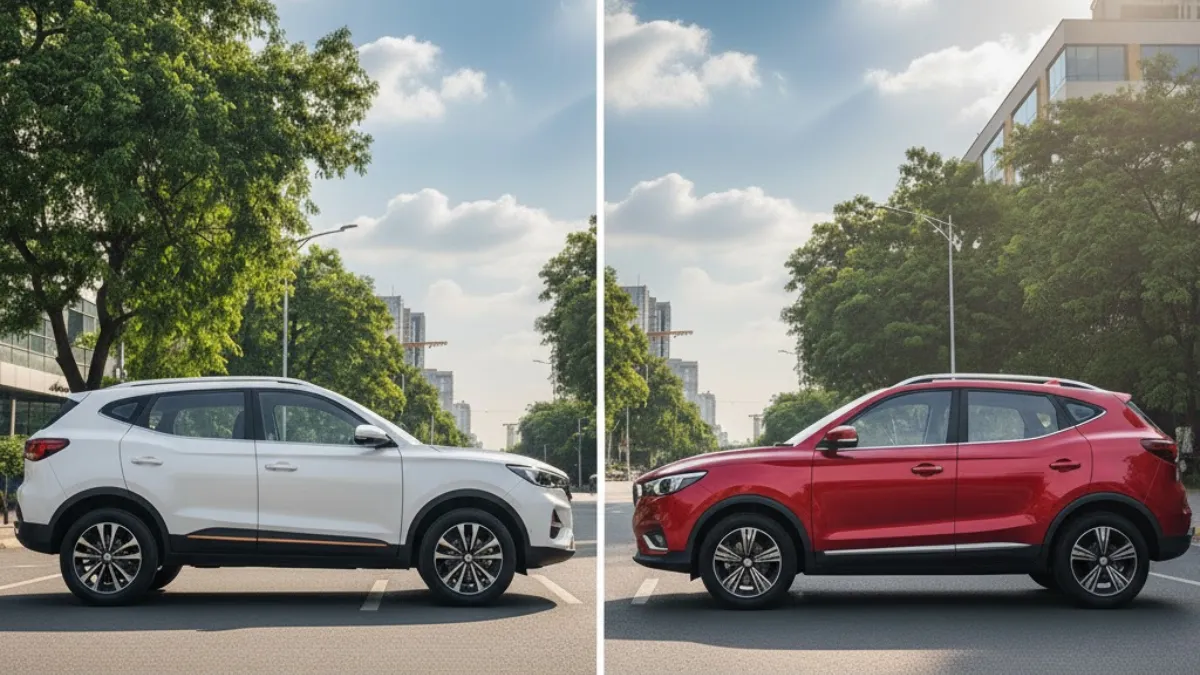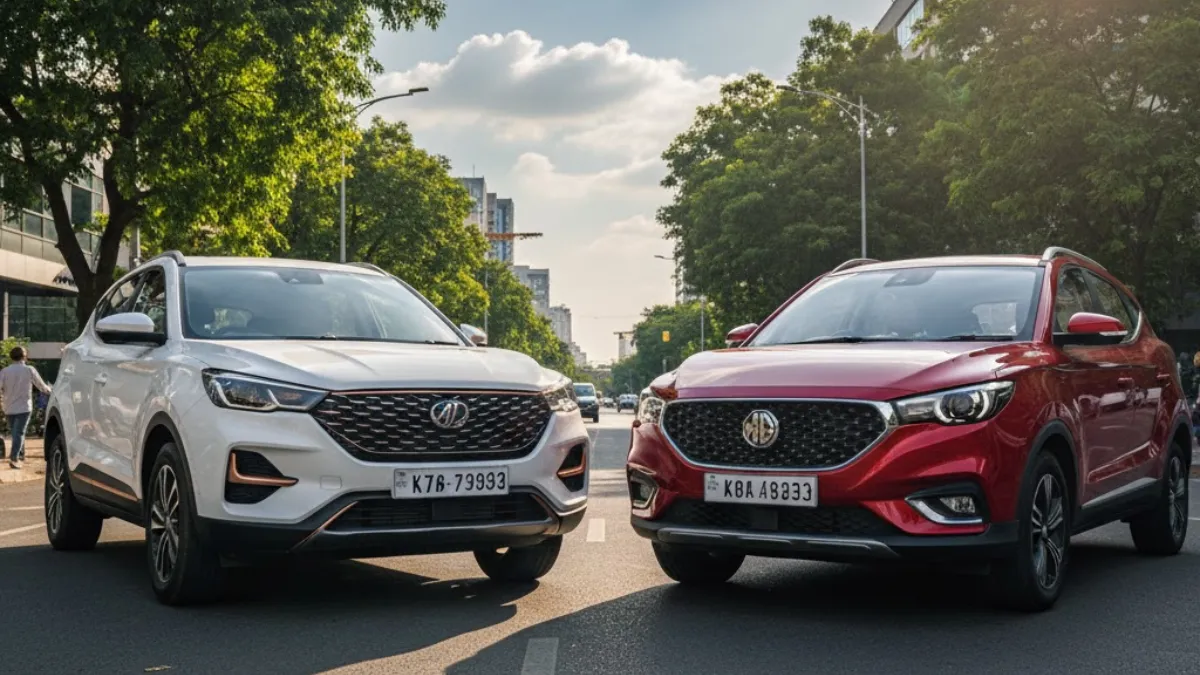The electric SUV scene in India is on fire right now. You’ve got the Mahindra XUV400, a proper desi machine with that tough, no-nonsense vibe, and then there’s the MG ZS EV, smooth, fancy, and a bit foreign in its feel. Both shout big promises about performance and range, but once the tyres hit Indian roads, the truth shows up pretty quickly.
Design and First Impressions
The XUV400 looks exactly like what you’d expect from Mahindra muscular, confident, and unapologetically bold. It doesn’t pretend to be something it’s not. The MG ZS EV, meanwhile, plays it cool neat lines, soft edges, very “city car” kind of feel. It’s elegant, yes, but it doesn’t make heads turn the way an SUV should.I remember walking into an MG showroom once, curious to test the ZS EV. The sales guy said, “Sir, it feels like a Tesla.” I laughed. “Brother, Tesla’s punch is in its throttle this feels more like an electric sedan in SUV clothing.” The steering was light, the drive smooth, but the excitement? Missing.

Range and Real-World Performance
Mahindra claims the XUV400 can do 456 km on a full charge. Sounds great on paper, but in real-world traffic, you’ll hit around 370–380 km at best. My friend from Gurugram drives one daily and says, “Turn on the AC, get stuck in traffic, and you’ll struggle past 350.” Still, battery cooling is solid and performance stays consistent even after long drives.MG’s ZS EV claims 460 km, and it usually manages around 400 km in real life. Charging is fast in both, roughly 50 minutes to 80%. But XUV400’s regenerative braking feels more natural. MG’s system sometimes jerks, especially when crawling through city traffic.
Interiors: Practical vs Premium
The XUV400 keeps things simple inside, nothing flashy, just functional. The plastics aren’t top-class, but the build feels solid. The seats are comfy, and the suspension tuning is perfect for Indian roads. You don’t get tossed around like older Mahindra SUVs used to do.

ZS EV, though, is clearly more premium with a big panoramic sunroof, classy dashboard, and high-quality materials. But the infotainment software? Glitchy. I saw it hang and restart during a test drive. The hardware’s nice, the polish isn’t. MG really needs to work on its software smoothness.
Driving Feel and Handling
Here’s where Mahindra pulled a surprise. The XUV400 feels solid and planted even at 120 km/h. The steering isn’t razor sharp, but it’s predictable and confidence-inspiring. MG’s setup is comfort-oriented, no doubt, but feels numb on rough stretches.I once met a Mahindra engineer during a test event who told me, “We tuned the suspension specifically for India’s speed breakers.” And he wasn’t joking. The XUV400 takes bad roads like a champ. The MG, being softer, sometimes bottoms out on rough patches that’s the trade-off for plushness.
Features and Tech
Neither of the two SUVs offers ADAS, which is a bit disappointing, but MG leads in tech features with 6 airbags, a 360-degree camera, and a more advanced connected system. Mahindra’s infotainment looks older, but it’s simpler and more reliable, no lag, no drama.
Service and Brand Trust
This is where Mahindra really wins. Its service network is massive, parts are easy to find, and response times are solid. One XUV400 owner I met in Jaipur had a battery fault it got replaced in 48 hours. MG? Great in metros, but smaller cities often face service delays.





